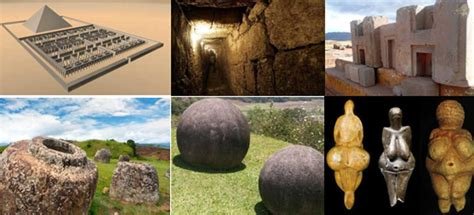Exploring the Mysteries of Ancient Civilizations: Archaeological Discoveries
Have you ever been fascinated by the mysteries of ancient civilizations? The world is filled with captivating stories of societies long gone, leaving behind clues to their way of life through their artifacts and structures. In this blog post, we will embark on a journey of discovery as we delve into the enigmatic world of ancient civilizations. From lost cities to forgotten traditions, we will explore the insights gained from archaeological discoveries that unravel the secrets of our ancestors. Join us as we unearth the ancient past, decode ancient writing systems, uncover forgotten customs, marvel at architectural wonders, and gain a deeper understanding of the cultural significance of ancient artifacts. Together, we will probe the origins of ancient civilizations and examine the evolution of human society, providing us with a window into the past that is as intriguing as it is enlightening.
Unearthing Lost Cities: Ancient Civilizations Revealed
Exploring the depths of history, archaeologists and historians have made astonishing discoveries in recent years, uncovering lost cities that shed light on ancient civilizations that were previously unknown to modern society. Through meticulous excavation and research, these once-forgotten metropolises have been brought back to life, offering invaluable insights into the daily lives, customs, and traditions of our predecessors.
The excavations of ancient cities such as Pompeii, Machu Picchu, and Troy have captivated the world, allowing us to glimpse into the past and marvel at the remarkable engineering, architecture, and urban planning of these advanced societies.
As we unearth these lost cities, we are taking monumental steps towards understanding the origins of human civilization and how these ancient societies laid the groundwork for the modern world. From the intricate infrastructure of the Indus Valley Civilization to the grandeur of the Mayan cities, each discovery adds a new layer to the rich tapestry of our shared history.
By delving into the remnants of these once-thriving urban centers, we have the opportunity to piece together the puzzle of our collective past, gaining a deeper appreciation for the ingenuity and resilience of those who came before us.
Unraveling Ancient Writing Systems: Decoding the Past
Throughout history, ancient civilizations have left behind a treasure trove of written records, inscriptions, and manuscripts that provide valuable insight into their culture, society, and way of life. The study of ancient writing systems allows us to unravel the mysteries of the past and decode the stories and knowledge that have been preserved for centuries.
One of the most intriguing aspects of ancient writing systems is the ability to decipher and understand languages that have long been forgotten. By examining and comparing different scripts and symbols, linguists and historians can piece together the meanings behind these ancient texts, shedding light on the traditions, beliefs, and customs of ancient civilizations.
Furthermore, the process of deciphering ancient writing systems opens up a world of possibilities for exploring the interconnectedness of different cultures and societies. It allows us to trace the spread and evolution of language and communication, as well as the exchange of ideas and knowledge across regions and time periods.
Overall, the study of ancient writing systems is an invaluable tool for decoding the past and gaining a deeper understanding of the rich tapestry of human history. It serves as a bridge between the present and the ancient world, and provides us with a glimpse into the lives and experiences of our predecessors.
Reviving Forgotten Traditions: Uncovering Ancient Customs
Exploring the rich tapestry of ancient customs and traditions is like stepping into a time machine, transporting us back to a world of rituals and beliefs that have long been forgotten. The revival of these ancient customs brings to light the beauty and significance of these practices, enriching our understanding of human civilization.
As we delve into the depths of history, we unearth the forgotten traditions that were once an integral part of ancient societies. From elaborate rituals to traditional festivals, each custom offers a glimpse into the values and beliefs that shaped the lives of our ancestors.
By uncovering these ancient customs, we are able to revive and preserve the cultural heritage of our predecessors. Through traditional arts, music, dance, and storytelling, we can keep these ancient traditions alive, ensuring that they are not lost to the winds of time.
Ultimately, the exploration of ancient customs allows us to connect with our roots and gain insights into the diverse ways in which human societies have evolved over time. It is through reviving these forgotten traditions that we honor the legacies of ancient civilizations, cherishing the wisdom of the past and passing it on to future generations.
Delving into the Secrets of Ancient Structures: Architectural Marvels
The ancient world is filled with architectural marvels that continue to fascinate and intrigue people to this day. From the towering pyramids of Egypt to the intricate temples of Angkor Wat, these ancient structures hold the secrets of bygone eras and offer insights into the technological and artistic achievements of our ancestors.
One of the most enduring mysteries surrounding these architectural marvels is how they were constructed with such precision and grandeur using only the tools and materials available at the time. The Great Pyramid of Giza, for example, has long been a source of controversy and speculation as to how the ancient Egyptians were able to align the massive stones so perfectly and create such an enduring monument.
Exploring these ancient structures not only provides a window into the past, but also allows us to marvel at the ingenuity and creativity of the ancient architects and builders who designed and constructed these wonders thousands of years ago.
By delving into the secrets of these architectural marvels, we gain a deeper appreciation for the rich cultural heritage of our ancestors and a greater understanding of the skills and knowledge that have been passed down through the ages.
Untangling the Enigma of Ancient Artifacts: Cultural Significance Explored
When we think of ancient artifacts, we often marvel at their beauty and craftsmanship. But these objects hold more than just aesthetic value – they offer us a glimpse into the cultural significance of ancient civilizations.
From the elaborate jewelry of the Egyptians to the intricate pottery of the Greeks, each artifact tells a story of the beliefs, traditions, and daily life of the people who created them. By studying these objects, archaeologists and historians can unravel the complexities of ancient societies and gain a deeper understanding of their cultural heritage.
Ancient artifacts also provide valuable insights into the social and religious practices of bygone civilizations. For example, the ornate statues and figurines of ancient Mesopotamia reveal the importance of religious rituals and beliefs in daily life. Similarly, the burial artifacts found in tombs and graves shed light on ancient concepts of the afterlife and the journey to the underworld.
By exploring the cultural significance of ancient artifacts, we can gain a greater appreciation for the rich and diverse heritage of our ancestors. These objects are not just relics of the past – they are windows into the world of ancient civilizations, offering us a deeper understanding of the human experience throughout history.
Uncovering Ancient Burial Practices: Insights into Afterlife Beliefs
For centuries, archaeologists and anthropologists have been fascinated by the ancient burial practices of various civilizations around the world. These burial traditions offer valuable insights into the beliefs and customs surrounding the afterlife in different cultures.
From elaborate tombs filled with treasures to simple graves with carefully placed offerings, ancient burial practices reflect the spiritual and religious beliefs of the people who performed them.
By studying the burial sites and artifacts left behind, researchers are able to piece together a clearer picture of how ancient societies viewed death and the afterlife, shedding light on their cultural and spiritual practices.
Understanding ancient burial practices not only provides valuable information about past civilizations, but also allows us to explore the universal human fascination with death and the afterlife, offering a glimpse into the diverse ways in which different cultures have sought to understand and commemorate their deceased.
Probing the Origins of Ancient Civilization: Evolution of Human Society
Exploring the origins of ancient civilization allows us to understand the evolution of human society. From the emergence of early Homo sapiens to the development of complex urban centers, the study of ancient civilizations provides insight into the progression of human communities.
Through archaeological excavations, researchers have unearthed evidence of early human settlements, revealing the gradual transition from a nomadic lifestyle to permanent settlements. This shift marked the beginning of social organization and the development of agriculture, laying the foundation for the growth of ancient civilizations.
Furthermore, the examination of ancient artifacts and writings offers a glimpse into the cultural and technological advancements of early civilizations. The invention of writing systems, the construction of monumental structures, and the establishment of trade networks signify the intellectual and societal achievements of ancient peoples.
By delving into the origins of ancient civilization, we gain a deeper understanding of the factors that shaped human society and set the stage for the development of modern civilizations. Through the study of ancient civilizations, we can trace the roots of our cultural heritage and recognize the enduring legacy of our ancestors.
Frequently Asked Questions
What are some examples of ancient civilizations that have been discovered through archaeology?
Some examples of ancient civilizations that have been discovered through archaeology include the Mayan, Incan, and Egyptian civilizations. These civilizations were once lost to history but have been unearthed through archaeological discoveries.
How do archaeologists decode ancient writing systems?
Archaeologists decode ancient writing systems through the study of inscriptions, manuscripts, and artifacts. They compare these writings to known languages and symbols to gradually piece together the meaning of ancient scripts.
What types of ancient customs have been uncovered through archaeological research?
Archaeological research has uncovered a wide range of ancient customs, including burial practices, religious rituals, and daily routines of ancient civilizations. These customs provide valuable insights into the lives of our ancestors.
What are some examples of architectural marvels from ancient civilizations?
Examples of architectural marvels from ancient civilizations include the pyramids of Egypt, the Great Wall of China, and the Acropolis in Greece. These structures showcase the engineering and artistic prowess of ancient societies.
What cultural significance can be found in ancient artifacts?
Ancient artifacts hold immense cultural significance, as they provide tangible evidence of the beliefs, traditions, and artistic expressions of ancient civilizations. These artifacts offer a window into the cultural identity of our ancestors.
What insights have been gained from studying ancient burial practices?
Studying ancient burial practices has provided insights into the afterlife beliefs, social hierarchy, and religious rituals of ancient civilizations. The treatment of the dead reflects the values and traditions of these societies.
How has the study of ancient civilizations contributed to our understanding of human society?
The study of ancient civilizations has contributed to our understanding of human society by tracing the evolution of social structures, technology, and cultural practices. It sheds light on the origins and development of human civilization.






